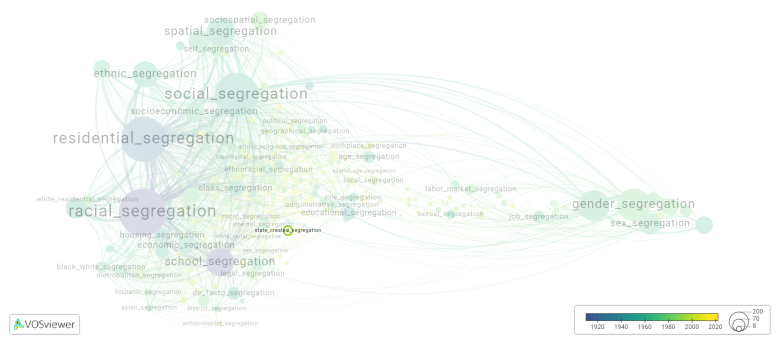State created segregation: Difference between revisions
(Creating page) |
(Creating page) |
||
| (5 intermediate revisions by the same user not shown) | |||
| Line 10: | Line 10: | ||
The legalization of state-created segregation was eventually challenged and deemed unconstitutional by the Supreme Court in landmark cases such as Brown v. Board of Education in 1954, which declared segregation in public schools unconstitutional. Despite the legal victories against state-created segregation, its legacy continues to impact society today through ongoing racial disparities and inequalities. | The legalization of state-created segregation was eventually challenged and deemed unconstitutional by the Supreme Court in landmark cases such as Brown v. Board of Education in 1954, which declared segregation in public schools unconstitutional. Despite the legal victories against state-created segregation, its legacy continues to impact society today through ongoing racial disparities and inequalities. | ||
==See also== | ==See also== | ||
==Related segregation forms== | |||
State created segregation is frequently discussed in the literature with the following segregation forms: | |||
[[school segregation]], [[housing segregation]], [[legal segregation]] | |||
[[File:state_created_segregation.png|780x780px]] | |||
This visualization is based on the study [[Segregation_Wiki:About| The Multidisciplinary Landscape of Segregation Research]]. | |||
For the complete network of interrelated segregation forms, please refer to: | |||
* [https://tinyurl.com/2235lkhw First year of publication] | |||
* [https://tinyurl.com/2d8wg5n3 Louvain clusters] | |||
* [https://tinyurl.com/223udk5r Betweenness centrality] | |||
* [https://tinyurl.com/244d8unz Disciplines in which segregation forms first emerged (Scopus database).] | |||
==References== | ==References== | ||
==Notes== | ==Notes== | ||
<references /> | <references /> | ||
{{NoteAI}} | {{NoteAI}} | ||
==State | ==State created segregation appears in the following literature== | ||
Feagin J.R., Barnett B.M. (2004). Success and failure: How systemic racism trumped the Brown v. Board of Education decision. ''University of Illinois Law Review'', ''2004''(5), 1099-1130. https://doi.org/ | Feagin J.R., Barnett B.M. (2004). Success and failure: How systemic racism trumped the Brown v. Board of Education decision. ''University of Illinois Law Review'', ''2004''(5), 1099-1130. https://doi.org/ | ||
Latest revision as of 07:17, 16 October 2024
Date and country of first publication[1][edit | edit source]
2004
United States
Definition[edit | edit source]
State-created segregation refers to the systematic and institutionalized separation of individuals based on their race, ethnicity, or other characteristics by government entities. This form of segregation was prevalent in the United States during the 19th and 20th centuries, particularly in the southern states, where laws and policies explicitly mandated the separation of white and non-white individuals in schools, public facilities, and residential areas.
State-created segregation was enforced through laws known as Jim Crow laws, which mandated racial segregation in public facilities, transportation, and other aspects of daily life. This form of segregation also included laws that prohibited interracial marriage, restricted voting rights for African Americans, and enforced discriminatory housing practices.
The legalization of state-created segregation was eventually challenged and deemed unconstitutional by the Supreme Court in landmark cases such as Brown v. Board of Education in 1954, which declared segregation in public schools unconstitutional. Despite the legal victories against state-created segregation, its legacy continues to impact society today through ongoing racial disparities and inequalities.
See also[edit | edit source]
Related segregation forms[edit | edit source]
State created segregation is frequently discussed in the literature with the following segregation forms:
school segregation, housing segregation, legal segregation

This visualization is based on the study The Multidisciplinary Landscape of Segregation Research.
For the complete network of interrelated segregation forms, please refer to:
References[edit | edit source]
Notes[edit | edit source]
- ↑ Date and country of first publication as informed by the Scopus database (December 2023).
At its current state, this definition has been generated by a Large Language Model (LLM) so far without review by an independent researcher or a member of the curating team of segregation experts that keep the Segregation Wiki online. While we strive for accuracy, we cannot guarantee its reliability, completeness and timeliness. Please use this content with caution and verify information as needed. Also, feel free to improve on the definition as you see fit, including the use of references and other informational resources. We value your input in enhancing the quality and accuracy of the definitions of segregation forms collectively offered in the Segregation Wiki ©.
State created segregation appears in the following literature[edit | edit source]
Feagin J.R., Barnett B.M. (2004). Success and failure: How systemic racism trumped the Brown v. Board of Education decision. University of Illinois Law Review, 2004(5), 1099-1130. https://doi.org/
